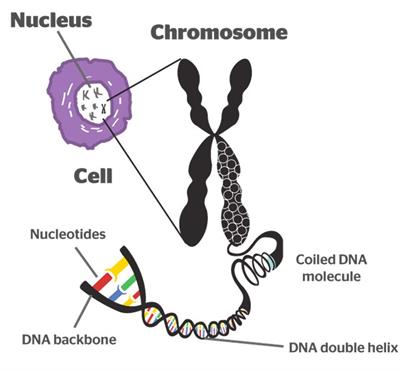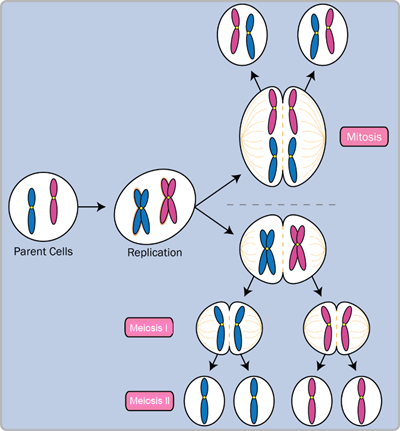PDF chapter test TRY NOW
We learned from Class IX Nucleus that chromosomes contain information that inherits characters with the help of DNA (Deoxyribonucleic acid) for generations because the DNA is the blueprint of life.
Every function in our body, or every organism is carried out with the help of DNA by producing the comments as proteins. Proteins are the polymers of amino acids, which are joined together like a chain.
Example:
We will take the example of ingestion & digestion in our stomach, as we already studied. The enzyme pepsin will break down the proteins into monomers as amino acids for quick assimilation.
Pepsin is an enzyme (protein compound) primarily produced by DNA codings and released out of the nucleus to perform the digestion function.
If the production of pepsin is absent, then the protein digestion process will not happen, and all the other processes will be disturbed.
Now, this is clear that DNA is responsible for all the functions in the organism's body. DNA is the basic resource for the actions, which need to be inherited from generation to generation through reproduction.
The inheritance of characteristics is carrying out by cell division. Before the cell division, the DNA also divides and makes copies of the original. The information of the new DNA copies will vary based on the crossing over between the chromosomes during meiosis division.

Nucleus from DNA
Along with the DNA copies, the cells inclusions, such as organelles, cytoplasm, and other entities, also need to be separated from the parent cell. The parent cell is divided into two, including the cellular apparatus and each carrying a copy of DNA are known as daughter cells.
And, these two daughter cells need not be identical to each other, and they may carry some variations from their parent cell, which leads to the variations in the generations.
The new daughter cell might be similar to each other (structurally) or need not be similar. And, also these daughter cells all the time, does not be similar to their parents. Sometimes, the variations may alter or destroy the cell completely from survival, known as mutations. If the mutation is positive, then the cell will survive, and if it is a negative mutation, then the cell will die.
Types of cell division:

Mitosis and Meiosis
It occurs in the somatic (non-reproductive) cells. Once the copying of DNA has been completed, the parent cell will divide into two, each carrying the daughter DNA. In this division, the cells chromosome number will be the same as the parent (maintaining the ploidy of a parent - diploid).
Meiosis:
Meiosis is different from mitosis division by occurring in the reproductive cells, sex cells or gametes. The chromosome numbers are reduced to half in the daughter cells (haploid) to maintain the species stability during fertilisation.
Reference:
https://www.flickr.com/photos/b4fa/27401362732
https://upload.wikimedia.org/wikipedia/commons/0/0d/Mitosis_vs._meiosis.png
